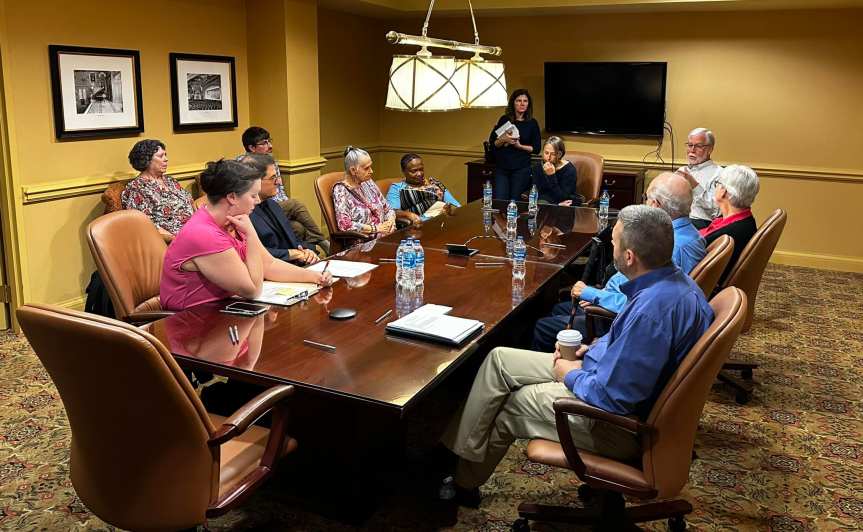Leadership in the church takes many forms. Some are highly visible—like the rostered ministers—and some lead with very little public recognition. This series, which first appeared in Bethlehem Evangelical Lutheran Church’s weekly newsletter, gives an overview of many kinds of leaders in the church.
Synod territories in the Evangelical Lutheran Church in America tend to be big—either geographically or in population. The largest geographic synod, the Rocky Mountain Synod, covers five states: Colorado, New Mexico, Utah, Wyoming, and the western part of Texas. The synod with the most congregations, the Northeast Pennsylvania Synod, has 250 congregations. The synod with the most Lutherans, the Minneapolis Area Synod, has 150,000 members. How can one bishop cover such a large part of the church?
Answer: they don’t. S8.14 of the Constitution for Synods states: “The synod bishop may have such assistants as this synod shall from time to time authorize.” That’s not much to go on.
So what are Assistants to the Bishop, and what do they do?
Synod Staff
First, there’s a difference between synod staff and Assistants to the Bishop. Staff is a very broad term and can be almost anything. Synod offices hire staff as bookkeepers, administrative assistants, social media operators, and more, just like congregations. Their jobs are mostly administrative, keeping the synod office functioning, and they don’t connect with congregations directly as much.
Many synod offices formally include certain churchwide representatives on their staff, such as Regional Gift Planners for the ELCA Foundation or Portico Regional Representatives. The one churchwide representative that all synods include on their staff rosters are Directors of Evangelical Mission. DEMs serve under call from the churchwide organization and are responsible for overseeing new mission starts, congregational redevelopments, and mission planning for the synods.
Assistants/Associates to the Bishop
“A2Bs” are a special kind of synod and churchwide staff. They work more closely with the synod and presiding bishops as a team, and extension of the episcopal ministry, often acting as representatives of the bishop to congregations and other particular ministries. In many ways, A2Bs became for our church what deacons were for the early church: helpers and workers with the bishop to keep the bishop informed of what was going on in the wider community, and to act on behalf of the bishop.
Most congregations know A2Bs through their work with congregations seeking to call a pastor or a deacon. The bishop may get the process started, but A2Bs often take over after that, guiding congregation Call Committees through the process, meeting with them, and advising them. When a pastor or deacon accepts a call, it is normally the bishop who formally installs the rostered minister, but A2Bs in many synods are also invested with that authority.
A2Bs aren’t just for call processes. They can provide pastoral care to congregations in crisis. They serve as program directors at the synod level. They represent the bishop on committees, on Conference boards, and the boards of separately-incorporated ministries. A single bishop can only be in so many places at once, so A2Bs pick up and continue the bishop’s ministry.
Curiously, though the synod constitutions do not specify, A2Bs are almost always ordained pastors. But an increasing number of synods are calling deacons as A2Bs, and a few have started calling lay people to the role. Both staff and A2Bs are officially hired/called by the synod council who, like a congregation council, exercise general oversight and ensure a system of accountability for the synod office staff.
In the Indiana-Kentucky Synod, the roles of the bishop and the A2Bs are so connected that when a new bishop is elected, the Constitution/Bylaws/Standing Resolutions direct that the A2Bs’ calls are terminated so the new bishop can start with a clean slate. This will be the case in our synod in 2024 when we elect a new bishop to replace the Reverend Bill Gafkjen, who is retiring next year.
Featured Image: A photo of the Indiana-Kentucky bishop, assistants to the bishop, and synod staff at an October 2023 meeting, courtesy of the Indiana-Kentucky Synod.

